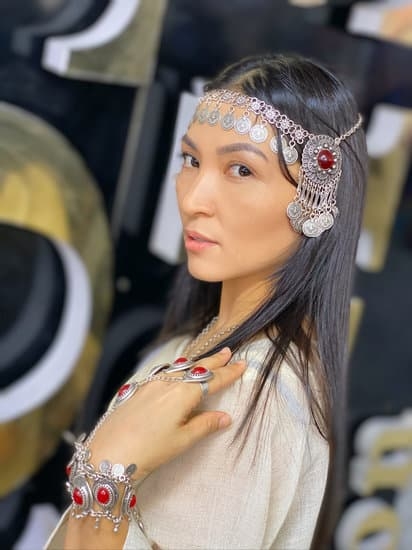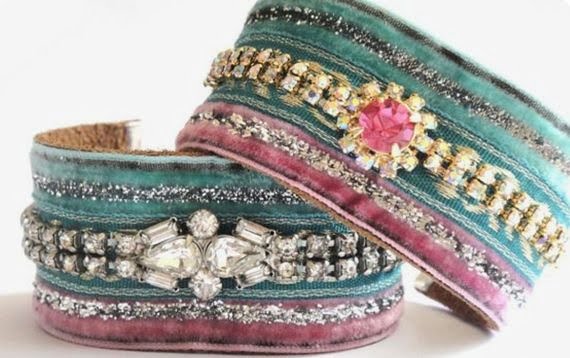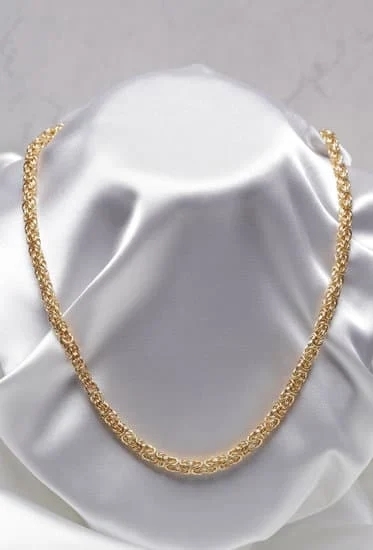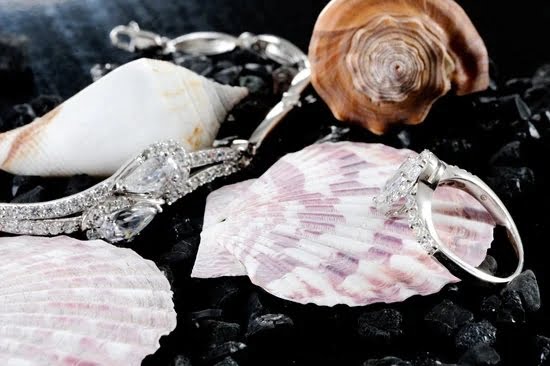The history of Irish jewelry is a fascinating journey through time, reflecting the rich cultural heritage and craftsmanship of the Irish people. From ancient Celtic symbols to modern trends, Irish jewelry has evolved into a timeless art form that continues to captivate admirers around the world.
Dating back to ancient times, traditional Irish jewelry is steeped in symbolism and mythology, with each design telling a unique story and carrying its own significance. This article will delve into the origins of Irish jewelry making, explore the evolution of traditional techniques over the centuries, and showcase the masterpieces of renowned artisans who have left an indelible mark on the world of jewelry design.
Join us as we unravel the symbolic meanings behind popular designs such as the Claddagh, Shamrock, and Trinity Knot, and discover how the history of Irish jewelry continues to inspire contemporary designs. From its early days to modern trends, Irish jewelry remains an enduring celebration of timeless beauty and cultural significance.
Ancient Celtic Symbols
Traditional Irish jewelry is steeped in rich cultural heritage, with its roots extending back to the ancient Celtic civilization. From intricate knotwork designs to symbolic motifs, each piece of jewelry holds a deeper meaning that reflects the spiritual and historical significance of the Irish people. Understanding the meanings behind these ancient Celtic symbols provides a fascinating insight into the craftsmanship and storytelling aspects of traditional Irish jewelry.
One of the most prominent symbols found in traditional Irish jewelry is the Claddagh ring, which features two hands holding a heart topped with a crown. This iconic design symbolizes love, loyalty, and friendship, making it a popular choice for wedding bands and gifts of affection.
The Shamrock is another widely recognized emblem in Irish jewelry, representing good luck and faith. Its three leaves are believed to signify the Holy Trinity in Christian tradition, adding a layer of religious symbolism to this beloved motif.
The Trinity Knot, also known as the triquetra, is an interwoven symbol with three distinct points. It has been interpreted in various ways throughout history, often representing elements such as past, present, and future or mind, body, and spirit.
This versatile symbol has been incorporated into many pieces of traditional Irish jewelry, showcasing the timeless appeal of Celtic craftsmanship and spiritual significance. As we delve deeper into the history of Irish jewelry, it becomes evident that these ancient Celtic symbols continue to inspire contemporary designs that honor the traditions and values of Ireland’s cultural heritage.
| Ancient Celtic Symbol | Meaning |
|---|---|
| Claddagh Ring | Love, loyalty, and friendship |
| Shamrock | Good luck and faith (with a religious aspect) |
| Trinity Knot | Versatile interpretations such as past-present-future or mind-body-spirit |
The Early Days
The history of Irish jewelry dates back to ancient times, reflecting the rich cultural heritage and traditions of the Celtic people. The origins of Irish jewelry making can be traced to the early Celtic tribes who inhabited Ireland. These skilled artisans crafted intricate designs adorned with symbolic meanings that represented their beliefs, values, and connection to nature.
During the early days of Irish jewelry making, materials such as gold, silver, bronze, and later on, copper were used to create ornate pieces. These materials were often embellished with gemstones, enamel work, and filigree details. The craftsmanship of these early Irish jewelers was highly esteemed and their creations were not only used for personal adornment but also as a form of currency and status symbols within the Celtic society.
The intricate knotwork designs found in ancient Irish jewelry are a testament to the skill and artistry of early Celtic craftsmen. These designs were inspired by the natural world and often incorporated motifs such as animals, plants, and celestial elements. Over time, these symbolic patterns became synonymous with Irish culture and continue to be prominently featured in modern interpretations of traditional Irish jewelry.
As we delve into the origins of Irish jewelry making, we gain a deeper appreciation for the enduring craftsmanship and artistic expression that has been passed down through generations. The exquisite designs from the early days of Irish jewelry continue to inspire contemporary artisans who seek to preserve the cultural significance and timeless beauty of traditional Irish jewelry.
Evolution of Irish Jewelry
The history of Irish jewelry is a fascinating journey that spans centuries, with its roots deeply intertwined with the rich cultural heritage of the Emerald Isle. From ancient Celtic symbols to modern trends, traditional techniques have evolved over the years, shaping the distinct and timeless beauty of Irish jewelry.
In ancient times, Irish jewelry making was a sacred craft practiced by skilled artisans who were deeply connected to their Celtic roots. The early days of Irish jewelry saw the use of intricate designs and symbolism inspired by nature, mythology, and spirituality. These traditional techniques were passed down through generations, and each piece was imbued with deep meaning and significance.
As time progressed, the evolution of Irish jewelry witnessed the influence of various external cultures, such as Viking and Norman influences. This intermingling of diverse traditions contributed to the development of new styles and techniques, enriching the tapestry of Irish jewelry making. While still honoring its Celtic origins, Irish jewelry began to encompass a blend of different artistic elements, resulting in a unique fusion that continues to captivate admirers worldwide.
Today, the evolution of Irish jewelry is evident in the seamless integration of traditional craftsmanship with contemporary designs. Modern artisans draw inspiration from the past while infusing innovative approaches to create exquisite pieces that continue to embrace the essence of Irish culture. The history of Irish jewelry has undeniably left an indelible mark on the global fashion landscape, showcasing its enduring legacy and timeless allure.
Famous Irish Jewelry Designers
From Tradition to Innovation: Famous Irish Jewelry Designers
One of the most fascinating aspects of the history of Irish jewelry is the contribution of famous designers and artisans who have shaped the industry with their creativity and craftsmanship. These master craftsmen have not only upheld the tradition of Irish jewelry making but have also introduced innovative designs that have garnered international acclaim.
The Legacy of House of Waterford
The House of Waterford is renowned for its exquisite crystal creations, but it is also recognized for its exceptional jewelry collection. Established in 1783, this prestigious brand has a long history of creating timeless pieces inspired by Ireland’s rich cultural heritage. The House of Waterford’s jewelry line reflects a perfect blend of traditional Celtic motifs and contemporary aesthetics, earning them a prominent place in the history of Irish jewelry design.
A Tribute to Geraldine O’Meara
Geraldine O’Meara is another name that resonates in the world of Irish jewelry design. Her unique style and attention to detail have made her one of the most sought-after designers in the industry. Drawing inspiration from nature and ancient Celtic symbols, O’Meara’s creations embody the essence of Ireland’s folklore and mythology. Her work has been celebrated for its intricate patterns and symbolic representations, adding depth and meaning to every piece she designs.
These designers and many others have played a crucial role in shaping the legacy of Irish jewelry, blending tradition with innovation to create masterpieces that continue to captivate admirers around the world. Their dedication to preserving the cultural significance of Irish symbolism while embracing modern trends has ensured that the history of Irish jewelry remains vibrant and relevant in contemporary times.
The Influence of Irish Mythology
Irish mythology has played a significant role in shaping the designs and symbols of traditional Irish jewelry. These intricate pieces of jewelry often feature symbols and motifs that are deeply rooted in Irish folklore and legends, adding layers of meaning and significance to the wearer. From ancient Celtic tales to the stories of saints and heroes, Irish mythology continues to inspire the creation of timeless jewelry pieces.
One of the most prominent symbols found in Irish mythology is the Claddagh ring. This iconic design features a heart held by two hands with a crown on top, symbolizing love, loyalty, and friendship.
Legend has it that the Claddagh ring was created by a humble fisherman from the village of Claddagh, who was captured and sold into slavery in North Africa. During his captivity, he crafted the ring for his beloved back home as a symbol of his enduring love and loyalty.
Another popular motif that draws inspiration from Irish mythology is the shamrock. This three-leafed clover is closely associated with St. Patrick, Ireland’s patron saint, who used it to explain the concept of the Holy Trinity to the pagan Celts. As a result, the shamrock has become an emblem of faith and spiritual devotion in Irish culture, often depicted in jewelry designs as a symbol of good luck.
The Trinity Knot is another intriguing symbol commonly found in Irish jewelry, representing eternal life and interconnectedness. Also known as the triquetra, this intricate knotwork design has its roots in both Celtic paganism and Christian symbolism. It is often seen adorning various pieces of jewelry such as necklaces, earrings, and bracelets as a potent representation of unity and continuity in life.
Symbolism in Irish Jewelry
Irish jewelry is rich in symbolism, with each design holding a deep cultural significance. From the iconic Claddagh ring to the intricate Trinity Knot, these symbols have been cherished for centuries and continue to be a source of inspiration for contemporary jewelry designers.
Claddagh: A Symbol of Love, Loyalty, and Friendship
The Claddagh ring, with its distinctive heart, crown, and hands motif, is steeped in tradition and symbolism. Originating from the fishing village of Claddagh in Galway, this iconic design represents love (the heart), loyalty (the crown), and friendship (the hands). It is often exchanged as a token of affection or worn as a symbol of Irish heritage.
Shamrock: Embracing Ireland’s Natural Beauty
The shamrock has long been associated with Ireland and is a beloved symbol that reflects the country’s lush landscapes. In Irish jewelry, the shamrock design is often used to celebrate the beauty of nature and evoke feelings of luck, prosperity, and harmony. Whether crafted into pendants, earrings, or brooches, the shamrock remains an enduring emblem in Irish jewelry design.
Trinity Knot: A Representation of Eternity and Unity
The intricate Trinity Knot, also known as the Triquetra, is a three-pointed Celtic knot that symbolizes eternity and unity. Its interwoven pattern has been interpreted in various ways throughout history, including representations of spiritual beliefs and connections between past, present, and future. In Irish jewelry, the Trinity Knot serves as a reminder of heritage and interconnectedness.
The history of Irish jewelry is intertwined with these timeless symbols that continue to hold special meaning for people around the world. Whether worn as meaningful accessories or passed down through generations as treasured heirlooms, Claddagh rings, Shamrock designs, and Trinity Knots will forever remain integral to the rich cultural tapestry of Irish jewelry.
Modern Trends
Irish jewelry has a rich history that dates back centuries, with traditional techniques and symbols playing a significant role in its evolution. Today, the history of Irish jewelry continues to inspire contemporary designs, blending the old with the new to create stunning pieces that uphold the cultural significance of the past.
The influence of Irish mythology and ancient Celtic symbols can be seen in modern Irish jewelry designs, with artisans incorporating elements such as Claddagh, shamrock, and Trinity knot designs into their creations. These timeless symbols hold deep meaning and are a testament to Ireland’s rich cultural heritage.
In addition to drawing inspiration from traditional symbols, modern Irish jewelry designers also pay homage to the early days of jewelry making in Ireland. Traditional techniques such as filigree work, intricate metal knotwork, and handcrafted detailing are still valued in contemporary designs, showcasing the craftsmanship that has been passed down through generations.
Contemporary Irish jewelry also embraces innovation and experimentation, as designers find new ways to interpret and reinterpret traditional motifs. This fusion of history and modernity results in unique pieces that appeal to both those with a deep connection to Irish culture and those who simply appreciate the beauty of intricately crafted jewelry.
- The use of filigree work
- Incorporation of ancient Celtic symbols
- Innovation and experimentation in design techniques
Overall, modern trends in Irish jewelry continue to honor its storied past while embracing new technologies and design aesthetics. The blend of tradition and innovation ensures that the history of Irish jewelry remains relevant in today’s global market.
Conclusion
In conclusion, the history of Irish jewelry is a testament to the rich cultural heritage and artistic tradition of Ireland. From ancient Celtic symbols to modern trends, Irish jewelry has evolved over the centuries, reflecting the country’s historical influences and mythological stories. The craftsmanship and intricate designs of Irish jewelry continue to inspire contemporary artists, showcasing the timeless beauty and cultural significance of this enduring art form.
The early days of Irish jewelry making provide a glimpse into the origins of traditional techniques that have been passed down through generations. These techniques have transformed over time, with famous Irish jewelry designers creating masterpieces that capture the essence of Ireland’s mythology and symbolism. The influence of Irish mythology is evident in popular jewelry pieces, such as the Claddagh, Shamrock, and Trinity Knot designs, each carrying its own unique symbolism and meaning.
As we celebrate the history of Irish jewelry, we also appreciate how it continues to inspire modern trends and contemporary designs. Whether it’s a traditional Claddagh ring or a more modern interpretation of Celtic symbols, Irish jewelry remains a cherished symbol of Ireland’s cultural heritage. Its timeless beauty and significance will undoubtedly continue to captivate admirers around the world for generations to come.
Frequently Asked Questions
What Is Ireland Known for Jewelry?
Ireland is known for its traditional Celtic jewelry, which often features intricate knotwork, spirals, and other nature-inspired motifs. These pieces are typically made from silver, gold, and incorporate gemstones like Connemara marble.
What Is the History of Celtic Jewelry?
The history of Celtic jewelry dates back to the Iron Age when ancient Celts created ornate pieces using metalworking techniques. The designs were heavily influenced by nature and symbolism, featuring intricate patterns that often held spiritual significance.
Is Celtic Jewellery Scottish or Irish?
While Celtic jewelry is strongly associated with both Ireland and Scotland, its origins can be traced back to various Celtic tribes across Europe. However, each region has its distinct styles and motifs that make their jewelry unique to their cultural heritage. So, in short, Celtic jewelry is both Scottish and Irish in nature.

Welcome to my jewelry blog! My name is Sarah and I am the owner of this blog.
I love making jewelry and sharing my creations with others.
So whether you’re someone who loves wearing jewelry yourself or simply enjoys learning about it, be sure to check out my blog for insightful posts on everything related to this exciting topic!





